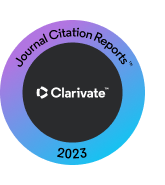BIOMONITORING OF SURFACE WATER TOXICITY RELATED TO URBAN AND INDUSTRIAL WASTEWATER RELEASE
DOI:
https://doi.org/10.5327/Z2176-947820160130Keywords:
environmental health; water quality; bioindicator; Trad‑MN; bioassay.Abstract
Water toxicity was biomonitoried by Tradescantia pallida, relating the results
to physicochemical and qualitative analysis. Two clusters were formed by
hierarchical analysis of micronuclei percentage (MN), dissolved oxygen (DO),
electrical conductivity (EC) and turbidity. The first cluster corresponded to a
stream that receives urban untreated sewage, where the highest MN (6.1%)
corroborated the physicochemical results (1.90 mg.L‑1 DO, 575.0 μS.cm‑1
and 115.6 NTU). The other cluster includes sampling sites with pollutants
from agriculture, livestock and industry. Some of them presented high MN
even with acceptable values of physicochemical parameters, according to the
Brazilian legislation. So for a better quality information on water pollution
monitoring it is essential to recognize the variables that affect the biotic
components, in a holistic approach of aquatic ecosystem. In this sense the
bioassay with T. pallida becomes a useful tool that can be applied in many
tropical and subtropical regions, because of its widely distribution.
Downloads
Downloads
Published
How to Cite
Issue
Section
License
Copyright (c) 2016 Revista Brasileira de Ciências Ambientais

This work is licensed under a Creative Commons Attribution 4.0 International License.


























